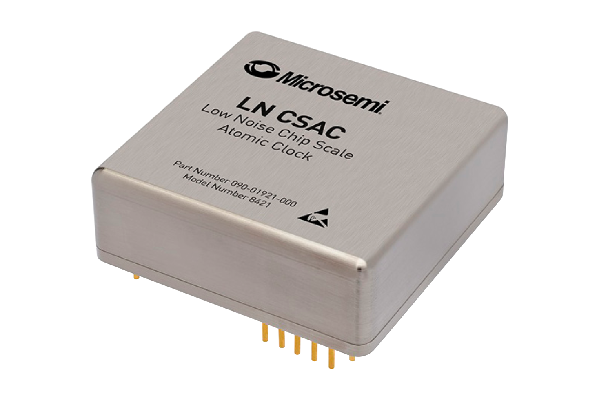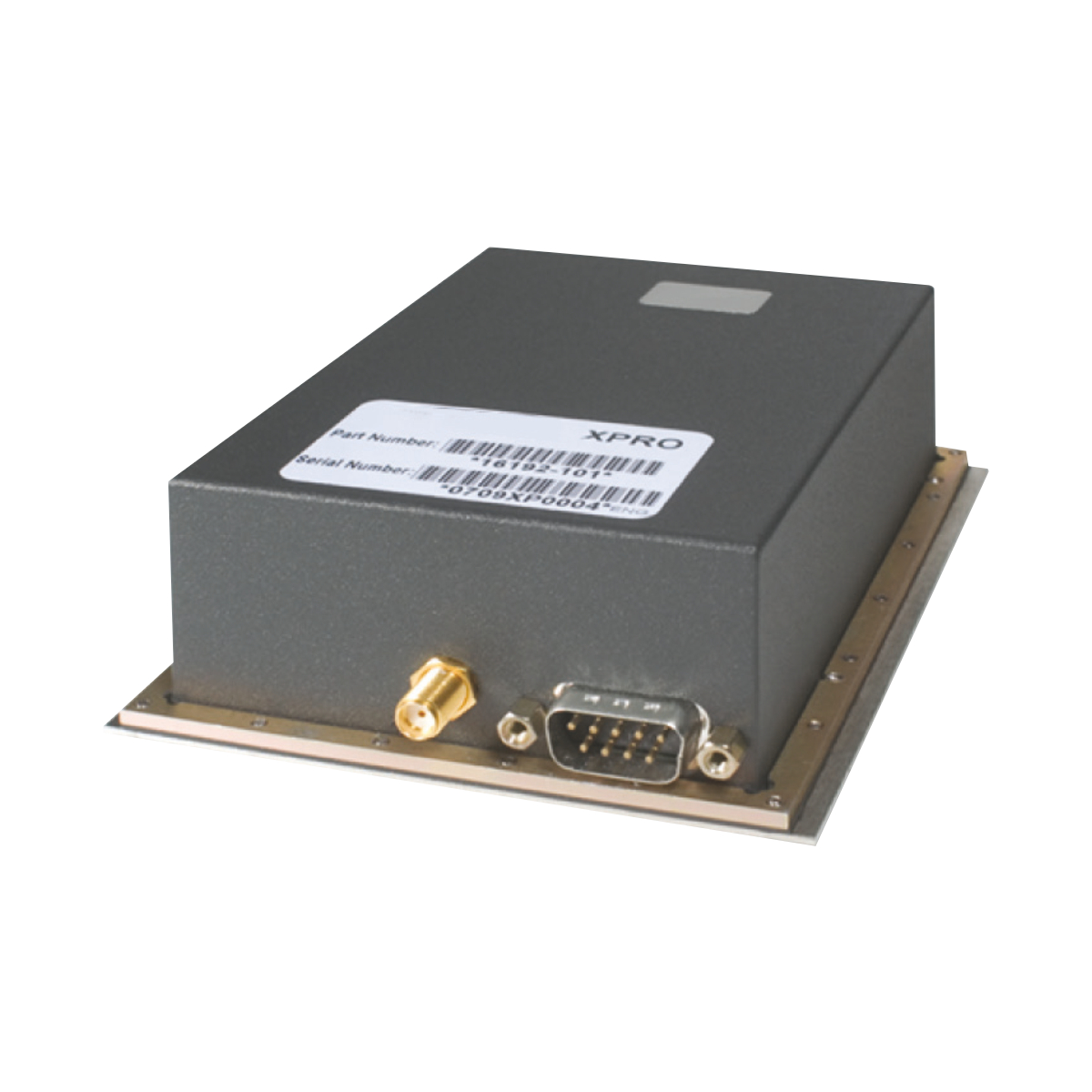Low Noise Chip Scale Atomic Clock
Pairing the lowest power atomic clock (CSAC) with the spectral purity of an OCXO has enabled an exceptionally stable oscillator.
The Microsemi LN-CSAC acts as a frequency and timing subsystem, while requiring limited size, weight, and power. It accepts a 1PPS input that may be used to synchronize the unit’s 1PPS output to an external reference clock within ±100 ns accuracy or discipline its phase and frequency to within 1 ns and 1.0 × 10–12, respectively.
Key Features
- < 295mW power consumption
- < 46cm3 volume
- < 4 minutes time to lock
- < 3×10-11 @1s Short Term Stability (Allan Deviation)
- < 9×10-10 /mo Aging Rate (Typical)
- -10oC to +70oC Operating Temperature
- 10MHz, 1PPS outputs
- 1PPS input for synchronization
- RS-232 interface for monitoring and control
- Phase Noise—sine wave
≤–85 dBc/Hz at 1 Hz
≤–120 dBc/Hz at 10 Hz
≤–140 dBc/Hz at 100 Hz
≤–145 dBc/Hz at 1 kHz
≤–150 dBc/Hz at 10 kHz
≤–155 dBc/Hz at ≥100 kHz
Videos
- Overview
-
The Microsemi LN-CSAC acts as a frequency and timing subsystem, while requiring limited size, weight, and power. It accepts a 1PPS input that may be used to synchronize the unit’s 1PPS output to an external reference clock within ±100 ns accuracy or discipline its phase and frequency to within 1 ns and 1.0 × 10–12, respectively.
Key Features
- < 295mW power consumption
- < 46cm3 volume
- < 4 minutes time to lock
- < 3×10-11 @1s Short Term Stability (Allan Deviation)
- < 9×10-10 /mo Aging Rate (Typical)
- -10oC to +70oC Operating Temperature
- 10MHz, 1PPS outputs
- 1PPS input for synchronization
- RS-232 interface for monitoring and control
- Phase Noise—sine wave
≤–85 dBc/Hz at 1 Hz
≤–120 dBc/Hz at 10 Hz
≤–140 dBc/Hz at 100 Hz
≤–145 dBc/Hz at 1 kHz
≤–150 dBc/Hz at 10 kHz
≤–155 dBc/Hz at ≥100 kHz
- Resources
-
Videos














